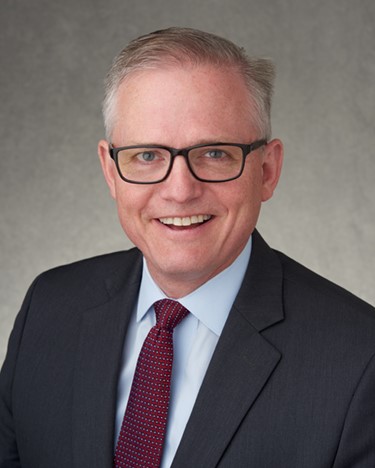Brian A. Falconer, PE Honored – September 13, 2023
October 5, 2023
When Brian Falconer first moved to New York City in 1990, he was full of dreams, ambition, and confidence. Having successfully completed his college education—first earning a Bachelor of Science in architectural engineering from the University of Kansas in Lawrence and then a Master of Science in civil engineering from the University of Texas at Austin—Brian enthusiastically aspired to obtain every commission, design every building, and draw every detail. He set out to become the favorite engineer of every architect, owner, and professional and trade organization and to achieve, in short, every recognition possible.
It was perhaps the overly idealistic and possibly naïve outlook of a young and talented—though yet untested—engineer at the start of his career. Of course, Brian soon realized that no single structural engineer could satisfy the deep desire of society for the built environment; many designers are needed to design and oversee the construction of any project. So, as he gained technical prowess and practical experience, Brian also set about establishing close relationships with colleagues and developing a network of collaborators to complete all the work that he set out to accomplish. Many commissions followed, involving many experts and many creators. Brian found that enlisting other competent people would help to advance projects to their fullest potential
Now—33 years after starting at Severud Associates—Brian’s youthful aspirations do not seem so far-fetched. He has been a principal of Severud Associates for 16 years, helped grow the firm’s experienced and expert staff, engineered an extensive and wide-ranging portfolio of challenging projects, and is a go-to collaborator with some of the world’s leading architects. And along the way, Brian has been recognized by the structural engineering and building design profession, most recently with his selection as the Structural Engineers Association of New York (SEAoNY) 2023-2024 Honorary Member for his distinctive contributions to field of structural engineering. He is the second Severud principal to be selected by SEAoNY for this prestigious award.
Among Brian’s numerous contributions is the recently opened John A. Paulson Center at New York University, which combines underground athletic facilities, classrooms and performing arts spaces, and faculty and student housing in one building and which won a SEAoNY Structural Engineering Excellence Award in this year’s competition, and Moynihan Train Hall, which expands New York City’s Penn Station across Eighth Avenue and into the landmarked James A. Farley Post Office to create a grand entrance to New York City and which won several awards, including the Grand Conceptor Award from the American Council of Engineering Companies (ACEC), The Empire Award from ACEC New York, and the Silver Award in the American Society of Civil Engineers’ Outstanding Civil Engineering Achievement awards program.
He may not have designed every building, but Brian’s portfolio is extensive. Other notable projects are the redevelopment of 390 Madison Avenue, which transformed an outdated office building into a thoroughly modern premier office tower; the acclaimed Neurosciences Institute in La Jolla, CA; and the Biomedical Science Research Building at the University of Michigan Medical School in Ann Arbor, MI. The list also includes Weill Cornell Medicine’s Belfer Research Building and NYU Langone Health’s Science Building in Manhattan; The Barnes Foundation and the University of Pennsylvania’s Krishna P. Singh Center for Nanotechnology, both in Philadelphia; the Dinosaur Halls at the American Museum of Natural History—and skeletons at several other institutions across the country; expansion of the Phoenix Art Museum; the AirTrain JFK/LIRR Jamaica Station addition and renovation; and the World Trade Center PATH Station, to name just a few.
Honorary membership also recognizes Brian’s positive impact on the profession of structural engineering. In 2013-2014, Brian was president of SEAoNY—where he implemented business practices that helped secure its financial success—and is currently chair of their SE Licensure committee. Over the course of his career, he has also chaired the New York City-International Building Code (NYC-IBC) Review Committee, Masonry Panel and was a member of the NYC-IBC Structural Committee and Seismic Panel. Brian has been a member of the Structural Engineering Institute Seismic Effects and Structural Fire Protection Standards committees and was a director of the Concrete Industry Board of New York City. In each of these appointments, Brian’s technical and operational contributions have led to significant improvements. In 2019, the Department of Civil, Architectural and Environmental Engineering at UTA elected Brian to their Academy of Distinguished Alumni.
Thirty-three years into his career, Brian is still brimming with dreams, ambition, and well-earned confidence. His current work includes the redevelopment of the Penn 2 office tower in Manhattan, which includes a 45-foot-high lobby extension and new Amtrak entrance to Penn Station; the Northwell Medical Pavilion, a new 200,000-square-foot healthcare facility on the Upper East Side, also in Manhattan; the Rego Park Branch of the Queens Public Library; and the six-story expansion of Northwell Health’s South Shore University Hospital in Bayshore, NY.